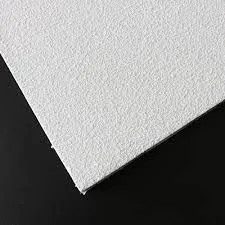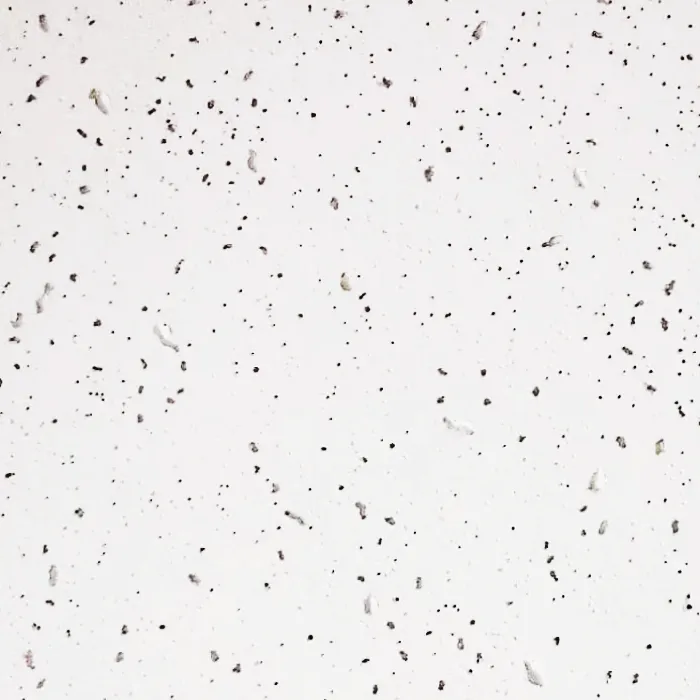- Afrikaans
- Albanian
- Amharic
- Arabic
- Armenian
- Azerbaijani
- Basque
- Belarusian
- Bengali
- Bosnian
- Bulgarian
- Catalan
- Cebuano
- Corsican
- Croatian
- Czech
- Danish
- Dutch
- English
- Esperanto
- Estonian
- French
- German
- Greek
- Hindi
- Indonesian
- irish
- Italian
- Japanese
- Korean
- Lao
- Malay
- Myanmar
- Norwegian
- Norwegian
- Polish
- Portuguese
- Romanian
- Russian
- Serbian
- Spanish
- Swedish
- Thai
- Turkish
- Ukrainian
- Uzbek
- Vietnamese
Jul . 07, 2025 08:25 Back to list
Rigid Mineral Wool Insulation Board – Superior Fire & Thermal Performance Sheets & Boards
- Introduction and Industry Overview: Rigid Mineral Wool Insulation Board
- Unmatched Technical Advantages: Performance and Reliability
- Comparative Manufacturer Analysis: Data and Table Overview
- Customization Capabilities: Designing the Ideal Solution
- In-Depth Application Case Studies
- Market Trends, Energy Efficiency, and Regulatory Impact
- Conclusion: The Future of Rigid Mineral Wool Insulation Board

(rigid mineral wool insulation board)
Introduction and Industry Overview: Rigid Mineral Wool Insulation Board
Insulation is a critical factor in modern construction, and rigid mineral wool insulation board
stands at the forefront of solutions for high-performance requirements. With the demand for buildings to meet stricter energy codes and ever-rising utility costs, selecting the right insulation has become a matter of both compliance and comfort. Rigid mineral wool insulation board, also known as rigid mineral wool sheets or rigid mineral wool board, offers a compelling combination of fire resistance, thermal stability, and acoustic absorption. The latest industry data shows that the global mineral wool market is projected to surpass $17.4 billion by 2027, with the rigid segment enjoying a CAGR of 6.1% from 2023. This growth is attributed to increased infrastructure activities, stringent fire-safety standards, and the rising awareness around sustainable construction. This blog explores the deep technical advantages, compares the performance of leading manufacturers, evaluates customization strategies, and highlights exemplary applications of rigid mineral wool insulation in demanding environments.
Unmatched Technical Advantages: Performance and Reliability
The technical superiority of rigid mineral wool insulation sheets lies in their unique inorganic composition, typically manufactured from a blend of molten basalt and iron ore spun into fibers. This microstructure results in the following key attributes:
- Thermal Resistance: The average rigid mineral wool board exhibits an R-value ranging from 4.0 to 4.3 per inch, supporting compliance with both commercial and residential building codes.
- Fire Safety: Unlike polymer-based insulations, mineral wool is naturally non-combustible, withstanding temperatures above 1,000°C (1,832°F). It has achieved A1 and A2 Euroclass fire ratings in independent certification tests.
- Dimensional Stability: With negligible shrinkage under heat, these boards maintain their shape and design tolerances even when exposed to high temperatures or moisture.
- Acoustic Performance: Their dense, open-fibre network delivers a noise reduction coefficient (NRC) of up to 1.00, outperforming most competing rigid insulations for both interior and exterior wall assemblies.
- Moisture Resistance: Hydro-repellent coatings or technology prevent water absorption, safeguarding against mold growth and ensuring long-term durability.
Comparative Manufacturer Analysis: Data and Table Overview
A head-to-head comparison of top global producers is essential for identifying best-in-class solutions in terms of performance, fire safety, cost efficiency, and sustainability. The following table summarizes key technical data among leading rigid mineral wool insulation board manufacturers:
| Brand | Thermal Conductivity (λ, W/mK) | Fire Rating | Compressive Strength (kPa) | Water Absorption | Recycled Content (%) | Typical Applications |
|---|---|---|---|---|---|---|
| Rockwool® | 0.034 | Euroclass A1 | 50–150 | <1% | 25–75 | Façade, Floor, Roof |
| Knauf Insulation | 0.036 | Euroclass A1 | 45–110 | <1.5% | 40–85 | Wall, Mechanical, HVAC |
| JM (Johns Manville) | 0.038 | ASTM E136, Non-combustible | 45–95 | <2% | 40–90 | Industrial, Structural, Process |
| Paroc® | 0.035 | Euroclass A1 | 60–140 | <1% | 45–80 | OEM, Fireproofing, External Walls |
As evident, while thermal conductivities and fire ratings are closely matched among top manufacturers, variations in compressive strength, recycled content, and application-specific engineering warrant careful consideration for project specification.
Customization Capabilities: Designing the Ideal Solution
Today’s building scenarios demand tailored insulation systems that integrate seamlessly with structural envelopes while optimizing thermal, acoustic, and fire-resistant properties. Customization options for rigid mineral wool insulation boards typically include:
- Thickness Range: Boards can be fabricated from as thin as 25mm up to 200mm (1–8 inches), addressing both retrofit and new-build applications.
- Density Tuning: Densities can be adjusted (35–200 kg/m³), impacting both compressive strength and acoustic absorption based on use-case.
- Surface Treatment: Facings with aluminum foil, glass fiber mats, or water-repellent coatings are available to adapt to specific exposure or performance scenarios.
- Panel Dimensions: Boards are cut to project-specific sizes — standard modules range from 600×1200 mm, but customized sizing maximizes installation efficiency.
- Integrative Detailing: Edge profiling, embedding of fastening systems, or pre-scoring for mechanical penetration are increasingly offered to simplify on-site fitting.
In-Depth Application Case Studies
The robust nature of rigid mineral wool insulation sheets is showcased in high-profile construction and industrial projects around the world.
Case Study 1: Passive House Multi-Residence, Germany
- Challenge: Attain airtightness and an annual heating demand < 15 kWh/m² in a 14-unit complex.
- Solution: 120mm rigid mineral wool board externally applied, integrated with a rainscreen façade. The building outperformed local fire safety codes (Euroclass A1) and achieved a 15% superior acoustic isolation.
- Project Scope: Façade upgrade of a 32-floor commercial tower.
- Outcome: 75mm mineral wool sheets retrofitted to provide both fire compartmentalization and 30% reduction in summer cooling loads, confirmed via post-project energy metering.
- Requirements: High-temperature insulation (up to 600°C), corrosion resistance, minimal water ingress.
- Implementation: Custom high-density mineral wool boards (175 kg/m³), supplied with aluminum foil facing, achieved 20% longer maintenance intervals compared to glass wool or foam solutions.
Market Trends, Energy Efficiency, and Regulatory Impact
Evolving standards in energy codes and growing emphasis on decarbonization are accelerating adoption of mineral wool insulation throughout the construction sector. In Europe, the near-zero energy building (NZEB) directive has driven mineral wool usage up by 18% since 2019. Similar patterns are recorded in North America and Asia-Pacific, where codes such as ASHRAE 90.1 and China’s GB 50189 are benefiting projects using rigid mineral wool insulation boards. The appeal is not limited to compliance: According to the U.S. Department of Energy, continuous mineral wool insulation can save up to 25% in annual heating and cooling costs over conventional cavities. Leading green building certifications now grant advanced credits for use of high-recycled-content, non-combustible insulation, making mineral wool a top choice for architects and engineers targeting long-term sustainability and resilience. Such developments underscore the growing market share and increased specification rates of mineral wool board in high-performance envelopes, fire-resilient retrofits, and critical infrastructure projects.
Conclusion: The Future of Rigid Mineral Wool Insulation Board
As buildings increasingly balance performance, sustainability, and occupant safety, the role of rigid mineral wool insulation board is more prominent than ever. Cutting-edge advancements in material science and production technology are further enhancing its key advantages, including fire-resistance, thermal performance, and a robust lifespan. Competitive differentiation, data-backed by manufacturer comparisons, and the scalability for custom engineered solutions position mineral wool insulation as a mainstay for both present-day and future construction needs. From landmark passive houses to mission-critical industrial facilities, the proven track record and adaptability of rigid mineral wool insulation sheets make it a prudent, forward-thinking investment. With regulatory pressures and market preferences aligning, the next decade will see even greater market penetration, innovation, and integrated building system approaches — reinforcing the legacy and ongoing relevance of rigid mineral wool insulation in a rapidly evolving infrastructure landscape.

(rigid mineral wool insulation board)
FAQS on rigid mineral wool insulation board
Q: What is a rigid mineral wool insulation board?
A: A rigid mineral wool insulation board is a dense, sturdy panel made from mineral fibers, primarily used for thermal and fire insulation. It’s commonly used in walls, roofs, and industrial applications. The board’s rigidity makes it ideal for supporting structures needing strong insulation.Q: How do rigid mineral wool insulation sheets differ from regular mineral wool?
A: Rigid mineral wool insulation sheets have a higher density and structural integrity compared to regular, softer mineral wool. They provide excellent support and durability. Their stiffness makes them suitable for load-bearing or vertical installations.Q: What are the primary benefits of using rigid mineral wool board?
A: Rigid mineral wool board offers outstanding fire resistance, superior thermal insulation, and excellent acoustic performance. It’s also water-repellent and resistant to mold. These properties make it ideal for both residential and industrial use.Q: Can rigid mineral wool insulation boards be cut to size during installation?
A: Yes, rigid mineral wool insulation boards can be easily cut to fit specific dimensions using a utility knife or saw. This adaptability ensures a precise installation. Always wear protective gear when cutting mineral wool products.Q: Are rigid mineral wool insulation sheets environmentally friendly?
A: Yes, most rigid mineral wool insulation sheets are made from natural rock or recycled materials. They are non-combustible, chemically stable, and often recyclable. This makes them an eco-friendly insulation choice.-
Transform Interiors with PVC Gypsum Ceiling: A Stylish, Durable, and Moisture-Resistant SolutionNewsMay.19,2025
-
The Smart Interior Upgrade: Discover the Durability and Versatility of Gypsum Ceiling Access Panel SolutionsNewsMay.19,2025
-
The Smart Choice for Interior Design: Discover the Value of PVC Gypsum Ceiling SolutionsNewsMay.19,2025
-
Mineral Fiber Ceiling Tiles: The Smart Blend of Performance and AestheticsNewsMay.19,2025
-
Mineral Fiber Ceiling Tiles: The Superior Choice Over Gypsum for Sound and Fire SafetyNewsMay.19,2025
-
Mineral Fiber Ceiling Tiles: Eco-Friendly Strength and Style for Every CeilingNewsMay.19,2025







